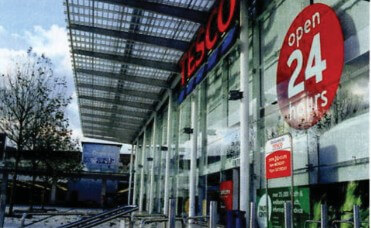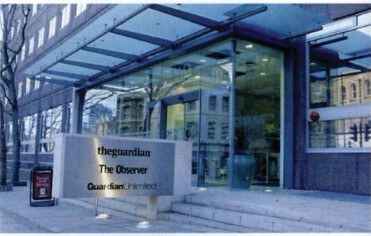Infrequently Asked Questions
For decades, marketers have tried to gain brand advantage by seeking better answers to a standard battery of time-honoured questions. (See panel ‘The Usual Questions’.)
Yet times have changed out of all recognition since they were first enshrined in marketing theory. Breakthrough thinking and brand advantage today will come from asking a new, a better set of questions. Outlined here are seven new questions for new times. How would your brand stand up to this kind of probing?
What should we stop doing now in order to stay true to our values?
What’s behind the question: The aim is alignment between the lofty things the brand says about itself in those corporate statements and Brand Keys, and the way it actually behaves in practice.
Why it matters now: Bloggers and pressure groups give today’s brands nowhere to hide; insincerity is swiftly and ruthlessly exposed. Consumers are taking a more critical interest in the ethical and environmental standards of the brands they buy, and expect values to be applied beyond the strict confines of the company itself. Meanwhile supply chains – a notorious Achilles heel – are becoming more complex and harder to police.
Who’s made it work: Starbuck’s – but only after activists had attacked the company for not living up to the tenets of good global citizenship proudly displayed in its stores. The issue was the alleged exploitation of third world farmers. Starbucks responded by completely reviewing its supply chain, clarifying the environmental and social criteria it would now demand, and dropping suppliers who wouldn’t meet them or demand them in turn of those further back in the chain.
The perils of not bothering to ask it: The brand runs the risk of being exposed as a phoney in an age where authenticity is all.
Nuances might vary from category to category, and fashions might come and go, but these standard questions essentially reflect the classical view of marketing fundamentals. Have some of them now passed their sell-by date?
Who are our customers?
What do they think now?
What would we like them to think?
How does the brand make them feel?
What are our values?
What is our brand essence?
Who are our heavy users?
Who are our competitors?
What is our competitive advantage?
If this brand were a person who would it be?
What market are we really in?
What are the functional benefits?
What are the emotional benefits?
How can we re-segment the market?
SWOT?
How can we make this product worse?
What’s behind the question: This counter-intuitive question is the one that entrepreneurs seem to ask instinctively. The aim is to explore how the product might currently be ‘over-designed’ in some way – as short-haul airlines were before Stelios came along – and to examine how simplification could release funds to innovate in areas consumers value more. The idea is to make the product ‘worse’, in order to make it much better.
Why it matters now: As markets increasingly become saturated, advantage will go to brands with the courage and imagination to achieve breakthrough innovation.
Who’s made it work: Accor Hotels is the classic case. Its Formule 1 concept was designed to under-perform the competition in numerous ways: average room size was smaller; there was no wardrobe – just a pole in the corner for clothes; no receptionist after six; no nice lobby area; no room service. The money saved was spent on better sound-proofing and much more comfortable beds, ensuring dramatic improvement in the area that customers really valued: a good night’s sleep at a low price. Formule 1 ran away with the market in France and is now busily taking on the world.
The perils of not bothering to ask it: A competitor just might, and you’ll find yourself playing catch-up – just as the legacy airlines are doing now.
How is our category currently letting people down?
What’s behind the question: Every category has its nod-and-a-wink deceits and illusions that conspire to work in favour of the business and against the consumer. An example is the way supermarkets put the everyday items like milk and eggs right at the back of the store, so you get tempted by things you never went in for. The aim of the question is to expose and challenge category norms and gain a reputation as a customer champion.
Why it matters now: It’s always mattered – but speed and amplification of word-of-mouth in the digital age gives huge advantage to the brand that’s prepared to ’fess up, change and sacrifice in order to serve customers better.
Who’s made it work: The office supplies retailer, Staples. They moved their equivalents of milk and eggs – printer ink and paper – from the back of the store to the front as part of a whole raft of initiatives to make things easy for customers. It cost them money short-term, but helped them regain the No 1 slot.
The perils of not bothering to ask it: The threat can come from outside the immediate competitive set. For example Virgin have made a habit of entering categories, from pensions to mobile phones, with the stated intention of ‘looking at the things that really annoy people and finding a better way of doing it’.
How can we take our customers closer to their Idealised Self?
What’s behind the question: The concept comes from the theory of Possible Selves, published in a seminal 1986 paper by the US psychologists Markus and Nurius. They showed that people are highly motivated to move from Actual Self (everyday reality) to Idealised Self (a mental image of the person at their best). Brands are used both practically and symbolically to help with that personal journey.
Why it matters now: The expression of personal identity has been a growing phenomenon since the 1960s (the period academics call the post-modern era) as people seek to replace the traditional sources of identity such as family, community and class. Brands are increasingly vital tools in what the marketing academic Craig Thompson famously termed the ‘Project of Self’.
Who’s made it work: Second Life – the online, virtual world where you have the opportunity to create a supercharged version yourself. The site claims to be ‘managed, created and owned’ by its 2 million residents. Some traditional brands, like BMW, Dior and Nike, also display an intuitive grasp of Idealised Self.
The perils of not bothering to ask it: Many brands use research techniques like ethnography to know what their customers are really like, warts and all. But if this leads to targeting Actual Self, the danger is customer rejection – since that’s the very notion people are trying to move on from.
What do we know but can’t seem to see?
What’s behind the question: Most big consumer brand companies have been running some sort of quantitative customer panel for years. Typically, the questionnaires remain constant, to provide consistent benchmarks by which to measure progress. But as market dynamics move on, companies are often blind to the new strategic issues buried within the mountains of data they are busy accumulating. Steady market share figures, for example, might mask violent levels of churn within a discrete consumer segment, which could be a strategic opportunity – if seen.
Data is also collected by departments outside marketing, like operations, that could used to generate insight about how people are buying and using the brand. EPOS data, for example, was originally designed to inform decisions like stock control, but savvy retailers have turned it into a revealing marketing tool.

Tesco: boosted bottom line by taking a joined-up approach to data use.
Why it matters now: Markets and habits are changing faster than ever before.
Who’s made it work: Businesses prepared to work with a partner with the credibility to challenge internal silo mentality and the expertise to disentangle data and join information from multiple databases. Tesco, through dunnhumby, and Phillip Morris, through Vanguard Strategy, have both improved the bottom line with initiatives based on a more joined-up approach to analysing standard data.
The perils of not bothering to ask it: You won’t even know what you don’t know.
What can we learn from non-customers?
What’s behind the question: Customer-centricity is the aim of every strong marketing company. But the focus on customers can blind marketers to opportunities in the usually vastly bigger pool of people who don’t buy the brand, or don’t engage with the category. Occasionally, it’s those non-customers that point the way to the category’s future. As Drucker puts it, “The first signs of fundamental change rarely appear within one’s own organisation or among one’s own customers.”
Why it matters now: Products and services co-designed by customers are already a feature of web-savvy brands. Engaging with non-customers could unleash a fresh source of insight and imagination.

The Guardian: studied non-readers of newspaper to modify website.
Who’s made it work: Instead of lamenting the fact that most under-25s don’t buy a daily newspaper, the Guardian studied them, and built its digital offer around the way they like to consume news. Through its policy of open, non-registration access, combined with multiple links, GuardianUnlimited now attracts 13 million unique users a month world-wide, compared with a daily readership of around 380,000 for the newspaper. In so doing, it has built a relationship with a pivotal but elusive cohort that newspapers have recently struggled to reach.
The perils of not bothering to ask it: You could end up in charge of a non-brand.
What gives this brand the right to exist?
What’s behind the question: Eric D Beinhocker, in his 2006 bestseller The Origin of Wealth, estimates the number of SKUs available to consumers in an advanced modern economy at around 10¹º – somewhere in the tens of billions. But what was once viewed as capitalism’s triumph of choice is increasingly looking like bloated and obscene oversupply. (See panel.) The mood going forward will be for fewer, better brands.
Why it matters now: The burgeoning awareness that every product represents a potential drain on resources, and a toll on the environment.
Who’s made it work: This is the most infrequently asked question of all – but it’s the one that will frame the future for brands. It’s the ultimate reality check: is this brand doing something different and meaningful for consumers, does it break down unfair category norms, is it ethical with suppliers and easy on the environment? Or is it just another me-too phoney taking up space and resources in an increasingly overburdened brand world?
The perils of not bothering to ask it: Consumers will ask it anyway, and if they don’t like the answer, they’ll desert in droves.
In category after category, we are seeing increasing choice and too much similarity between brands and the marketing of them. To really stand out in these overcrowded and confusing markets, businesses are going to have to start thinking differently. The Infrequently Asked Questions, as a complete battery, are designed to help achieve this – but for each category, some questions will be even more pertinent than others.
Financial services
With the FSA estimating that 29,000 firms operate in the financial services category, consumers have to face over 2,000 main brands vying for attention, and pick their way through around 300 financial service product types. Given recent problems over mis-selling, this might be the important IAQ to ask: How is our category currently letting people down?
Cars
Nearly 3 million of us will be looking forward to owning a new car this year. But the process of buying one could get stressful with around 60 different car marques and over 200 different models to choose from. What could help that choice is the kind of breakthrough innovation that comes when marketers ask, How can we make this product worse?
Groceries
The weekly shop can be both tedious and overwhelming with the typical supermarket stocking over 30,000 lines – which means that we have to reject approximately 29,920 of them to arrive at our choices for the week. Both retailers and grocery brands could gain a better understanding of consumer desires by following Tesco’s lead and asking, What do we know but can’t seem to see?
Charities
For the UK’s average £150 per head in annual charitable donations, there are over 180,000 registered charities who can put it to good use, ranging in scale and nature from C.R.A.S.H (Care, Rehabilitation and Aid for Sick Hedgehogs) to the more familiar Oxfam, NSPCC or RNLI. Understanding that giving is a reflection of a person’s self-identity could revolutionise charity marketing. Key question: How can we take customers closer to their Idealised Self?
Beauty
There is nothing simple about staying beautiful in today’s ‘brandscape’. We choose our beauty regime from over 100 skincare brands, 118 Perfumes and some 200 bodycare brands; we also have to contend with up to 20 new lines being introduced every month. Perhaps the increasing trend towards ethical considerations will become the tie-breaker when it comes to ultimate choice in this overcrowded market. In which case, the big IAQ will be, What should we stop doing now in order to stay true to our values?
